Casemate Publishers is a global publisher in the fields of military history, aviation and intelligence studies, covering all aspects of military history, and all periods of conflict – from ancient civilisations to modern warfare.
Their diverse list includes military autobiographies and memoirs, histories of specific events, and a growing list of leadership titles. Casemate Publishers is also the home of the renowned Casemate Illustrated series – loved by general readers, modellers and specialists alike, these books bring visual detail to key elements of military history, from campaigns, units and battles, to aircraft, ships and weapons. Their global team is passionate about the subject and the authors and experts they work with, and in bringing readers the best of military history.
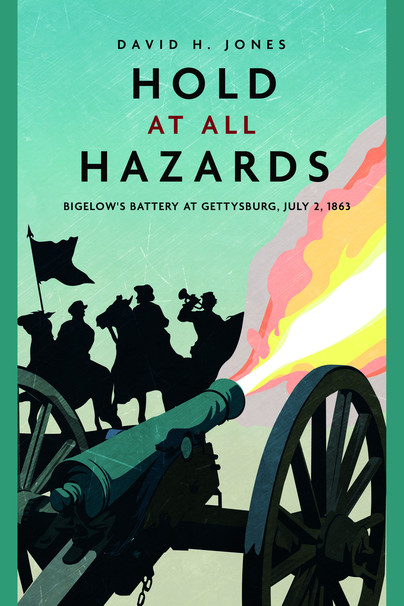
Format: Paperback
Pages: 272
ISBN: 9781636240602
Pub Date: 15 Dec 2021
Illustrations: Illustrations and maps
Description:
By late January of 1863, the 9th Massachusetts Battery of Light Artillery has been stationed within the Washington, D.C. defenses the entirety of its five-month existence.
The soldiers are badly demoralized, inadequately trained and poorly disciplined. When the inept captain of the battery believes that he's about to be fired, he hastily resigns, and the governor of Massachusetts promptly selects a twenty-three-year-old artillery officer with battlefield experience to take command. Captain John Bigelow institutes strict discipline and rigorous training which causes the men, including Chief Bugler Charles Wellington Reed, to consider him to be a heartless tyrant. However, Captain Bigelow's methods rapidly improve their capabilities and Reed reluctantly gains respect for the new captain. Nevertheless, subtle conflict between captain and bugler remains in a manner only constrained by military protocol. In late June of 1863 the battery is collected by the Army of the Potomac as it passes the Washington defenses to thwart an invasion by Robert E. Lee's Army of Northern Virginia. After days of hard marching, Bigelow's Battery arrives on the Gettysburg battlefield in the forenoon of July 2, 1863. Within hours they are immersed in violent combat during which the officers and men of the battery fight like veterans against the Confederates. Unbeknownst to Charlie, he will twice disobey a direct order from Captain Bigelow before the day is out. When furious fighting reaches a crescendo, the inexperienced light artillery battery is ordered to hold its position at all hazards, meaning until it's overrun. Without hesitation the batterymen stand to their guns and sacrifice their life's blood to gain the time necessary for a second line of artillery to be formed behind them, thus helping to prevent a disastrous defeat for the Federal Army on Northern soil. Charlie saves his captain's life and is later awarded the Medal of Honor.

Format: Paperback
Pages: 144
ISBN: 9781955041003
Pub Date: 15 Dec 2021
Description:
When ships under the command of European settlers first sailed into the Delaware Bay in the early 1600s, Pennsylvania’s documented history of strange and macabre events began. Contrary to the growth of other colonies like Massachusetts and Virginia, the Philadelphia area became a melting pot of different cultures and beliefs that all served to shape the way its people related to the supernatural, to the treatment of their dead, and toward each other. While it provided a refuge for those seeking religious liberty and economic prosperity, cultural tensions also shaped the colony in sinister ways, leading to a level of violence in the eighteenth century unseen anywhere else in the world.
How, in a place that was eighty percent pacifist, did Chester County, Pennsylvania, outstrip even London in the amount of murders and assaults committed? How did a judicial system hailed at the end of the 1600s as the best and fairest in the world, in which the death penalty only applied in cases of murder and treason, make the decision a century later to hang a man for burglary? Under what circumstances was it considered perfectly reasonable, even expected, to eat the dead?Jennifer L. Green transports readers through three centuries of murder, disease, witchcraft, cannibalism and botched executions in Chester and Delaware counties, using archival evidence and research to explain how such historical oddities and tragedies occurred.

Format: Hardback
Pages: 264
ISBN: 9781612009919
Pub Date: 15 Dec 2021
Description:
For the first two weeks of the Easter Offensive of 1972, the 571st Military Intelligence Detachment provided the only pertinent collateral intelligence available to American forces. Twice daily, the Detachment provided intelligence to the USS Buchanan (DDG-14), US Navy SEALS and Special Forces units including tactical and strategic forecasts of enemy movements, information that was otherwise unavailable to U.S.
units and advisors in-country. In the weeks before the offensive, vital agent reports and verbal warnings by the 571st MI Detachment had been ignored by all the major commands; they were only heeded, and then only very reluctantly, once the Offensive began. This refusal to listen to the intelligence explains why no Army or USMC organizations were on-call to recover prisoners discovered or U.
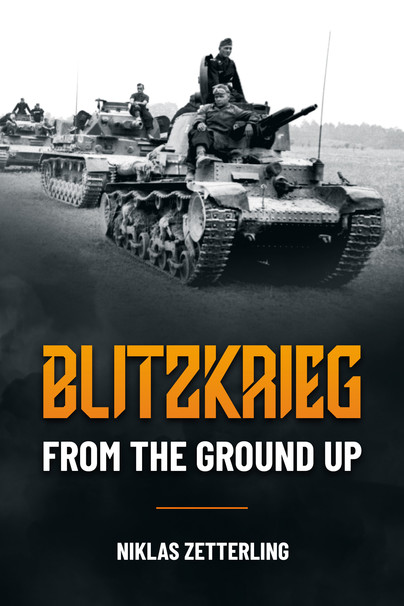
Format: Paperback
Pages: 336
ISBN: 9781636240558
Pub Date: 15 Dec 2021
Description:
The successes of the German Blitzkrieg in 1939–41 were as surprising as they were swift. Allied decision-makers wanted to discover the secret to German success quickly, even though only partial, incomplete information was available to them. The false conclusions drawn became myths about the Blitzkrieg that have lingered for decades.
It has been argued that German victories in the early part of the war rested less upon newly developed tanks and aircraft and more on German military traditions: rather than creating a new way of war based on new technology, the Germans fitted the new weapons into their existing ideas on warfare. These doctrines focused on independent action, initiative, flexibility, decentralized decision-making and mobility. The conduct of German soldiers, particularly the lower-ranking men, on the battlefield was at the core of the concept and German victories rested upon the quality of the small combat units.This book focuses on the experience of the enlisted men and junior officers in the Blitzkrieg operations in Poland, Norway, Western Europe and Russia. Using accounts previously unpublished in English, military historian Niklas Zetterling explores how they operated, for example how a company commander led his tanks, how a crew worked together inside a tank, and the role of the repair services. The author fits these narratives into a broader perspective to give the reader a better understanding of why the Germans were so successful in 1939–41.

Format: Hardback
Pages: 288
ISBN: 9781636240381
Pub Date: 15 Dec 2021
Description:
During Hank Zeybel's first tour in Vietnam he flew 772 C130 sorties as a navigator. He volunteered for a second tour, requesting assignment to B26s so he could "shoot back." When B26s were removed from the inventory, he accepted a Spectre gunship crew slot, flying truck-busting missions over the Ho Chi Minh Trail.
He describes the terror of flying through heavy AA fire over the trail, and the heroics of the pilots in bringing their crews through. Away from the war he recalls leave back in the US, his elderly father bewildered by his war-hardened attitude and black sense of humor. Contextualising his time with Spectre gunships, he compares his experiences with those of other airmen, like Phil Combies and Robin Olds, and his broader Air Force career - he joined upon graduating university in 1955 and his first operational assignment was as a B47 Stratojet navigator-bomber at Strategic Air Command - trained to drop thermonuclear bombs with precision. From 1957 to 1963, he logged over two thousand hours as a radar-bombardier in B47 Stratojets and B52 C-models. In this memoir of Vietnam, his Air Force career and his second career as a journalist and writer, Zeybel's admiration of the skill and bravery of pilots - many of whom who he depended on for his very survival - shines through his desciptions of combat missions and being "along for the ride."
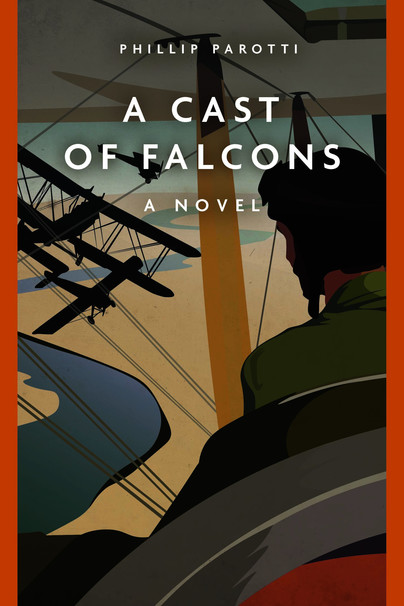
Format: Paperback
Pages: 288
ISBN: 9781636240886
Pub Date: 15 Dec 2021
Description:
Phillip Parotti's new novel offers fast-paced action in the skies over the Sinai desert in 1916. Lieutenant Devlin Collins, an Irish-American flier in the Royal Flying Corps, expecting to fly on the Western Front, instead finds himself flying antiquated two-seater bomber and photo reconnaissance missions over the Egyptian desert against the forces of the Central Powers which are trying to capture the Suez Canal. Pitted against German machines which are up-to-date and well equipped, the men of the RFC fight at a considerable disadvantage as they go forth to meet their enemy, but committed to their cause and with aggressive spirit, no matter how great the stress of battle, they proceed and prevail, continually forcing the Turks and Germans back as the army moves slowly toward Palestine.
Constantly endangered by superior German machines, facing incessant ground fire during their bombing and strafing attacks, Dev and his fellow pilot Crisp drive home their attacks with unremitting determination. In the off hours from combat, Dev discovers that he has a particular talent for planning his flight's air raids. This talent manifests itself completely in the campaign's culminating attack on the German redoubts at the battle of Magdhaba, an attack so successful that when the pilots are finally pulled back for a rest after a year of fighting, Dev is promoted and invited onto the staff at GHQ is order to apply his expertise to air planning as the army moves on Gaza with the intention of driving into Palestine.

Format: Hardback
Pages: 160
ISBN: 9781636240640
Pub Date: 10 Dec 2021
Series: Casemate Illustrated Special
Illustrations: Color
Description:
A comprehensive and fully illustrated account of all the vehicles needed to move, use, and maintain communications equipment vital to the success of the U.S. Army during World War II, including trucks, workshop trucks, vans and trailers all designed by the Signal Corps, described in technical detail and illustrated by hundreds of period photos.
The Signal Corps was at the forefront of the technological development of communications throughout World War II. Tasked with coordinating all American military activities, the Signal Corps initially had to rely on a communications landline network covering some 1 300 000 km. This was soon overtaken by radio communications. however adaptation remained a priority within the US Army Signal Corps for when landline networks were unavailable or radio silence had to be observed.Almost every large piece of Signal Corps equipment required wheeled transport, and over a hundred vehicles and trailers would be specially designed, many associated with one particular radio or radar installation. This comprehensive and fully illustrated account covers radar and radio vehicles, plus specialised vehicles such as telephone repair trucks, mobile telephone switchboards and homing pigeon units, all described in technical detail and illustrated by hundreds of period photos.
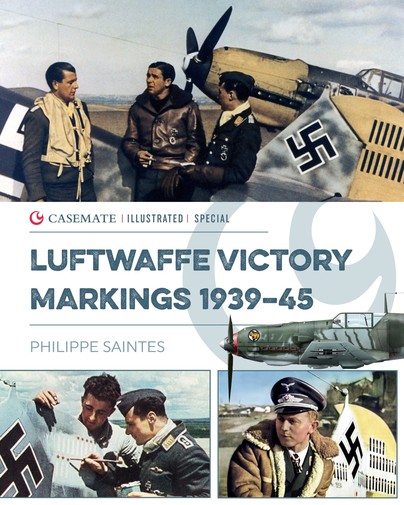
Format: Hardback
Pages: 192
ISBN: 9781636240909
Pub Date: 10 Dec 2021
Series: Casemate Illustrated Special
Illustrations: 150 photographs and illustration
Description:
This book provides an overview of the victory markings painted on the fins and rudders of the planes of the German day fighter and night fighter aircraft between 1939 and 1945, and demonstrates how these were applied in reality through the profiles of nineteen pilots, including some of the most emblematic pilots of the Luftwaffe: Hans Troitzsch, Johannes Gentzen, Frank Liesendahl, Wilhelm Balthasar, Otto Bertram, Joachim Müncheberg, Karl-Heinz Koch, Kurt “Kuddel” Ubben, Felix-Maria Brandis, "Fiffi" Stahlschmidt, Franz-Josef Beerenbrock, Heinrich Setz, Walter "Gulle" Oesau, Max-Hellmuth Ostermann, Heinrich Bartels, "Fritz" Dinger, Martin Drewes, Egmont zur Lippe-Weissenfeld and Ludwig Meister.

Format: Hardback
Pages: 224
ISBN: 9781636240862
Pub Date: 10 Dec 2021
Series: Casemate Illustrated Special
Illustrations: Over 200 photographs, diagrams and artwork
Description:
When HMS Dreadnought was commissioned into the Royal Navy in 1906 this revolutionary new class of big-gun iron-clad warship immediately changed the face of naval warfare, rendering all other battleships worldwide obsolete. The Admiralty realised that as soon as the ship was revealed to the global naval community Britain would be a in race to stay ahead, and so the first dreadnoughts were built in record time. While there were those who regarded the vessel as a triumphant revolution in naval design, the dreadnought initially had its critics, including those who thought its slower, heavier guns left it vulnerable to the secondary armament of other warships.
Nevertheless, other countries, notably Germany, and the United States soon began to lay down dreadnoughts. The culmination of this arms race would be the confrontation of the British and German fleets at the Battle of Jutland in May 1916 - the greatest clash of naval firepower in history. This book gives detailed insights into the design, operation and combat history of these incredible vessels.

Format: Hardback
Pages: 256
ISBN: 9781636240114
Pub Date: 10 Dec 2021
Illustrations: maps and photographs
Description:
In an era of battlefield one-upmanship, the raid on the Nation's capital in July 1864 was prompted by an earlier failed Union attempt to destroy Richmond and free the Union prisoners held there. Jubal Early's mission was in part to let the North have a taste of its own medicine by attacking Washington and freeing the Confederate prisoners at Point Lookout in southern Maryland. He was also to fill the South's larder from unmolested Union fields, mills and barns.
By 1864 such southern food raids had become annual wartime events. And he was to threaten and, if possible, capture Washington. This latter task was unrealistic in an age when the success of rifle fire was judged to be successful not by accuracy, but by the amount of lead that was shot into the air. Initially, the Union defenders of the city were largely former slaves, freemen, mechanic, shopkeepers and government clerks, as well as invalids. They might not have known much about riflery and accuracy, but they were capable of putting ample lead on the long until Regular Union regiments arrived. Jubal Early hesitated in attacking Washington, but he held the City at bay while his troops pillaged the countryside for the food Lee's Army needed to survive.This new account focuses on the reasons, reactions and results of Jubul Early's raid of 1864. History has judged it to have been a serious threat to the capital, but James H. Bruns examines how the nature of the Confederate raid on Washington in 1864 has been greatly misinterpreted - Jubal Early's maneuvers were in fact only the latest in a series of annual southern food raids. It also corrects some of the thinking about Early's raid, including the reason behind his orders from General Lee to cross the Potomac and the thoughts behind the proposed raid on Point Lookout and the role of the Confederate Navy in that failed effort. It presents a new prospective in explaining Jubal Early's raid on Washington by focusing on why things happened as they did in 1864. It identifies the cause-and-effect connections that are truly the stuff of history, forging some of the critical background links that oftentimes are ignored or overlooked in books dominated by battles and leaders.

Format: Hardback
Pages: 264
ISBN: 9781636240046
Pub Date: 10 Dec 2021
Description:
Many believe that World War I was only fought "over there," as the popular 1917 song goes, in the trenches and muddy battlefields of Northern France and Belgium - they are wrong.There was a secret war fought in America; on remote railway bridges and waterways linking the United States and Canada, aboard burning and exploding ships in the Atlantic Ocean, in the smoldering ruins of America's bombed and burned-out factories, munitions plants and railway centers and waged in carefully disguised clandestine workshops where improvised explosive devices and deadly toxins were designed and manufactured. It was irregular warfare on a scale that caught the United States woefully unprepared.
This is the true story of German secret agents engaged in a campaign of subversion and terror on the American homeland before and during World War I.
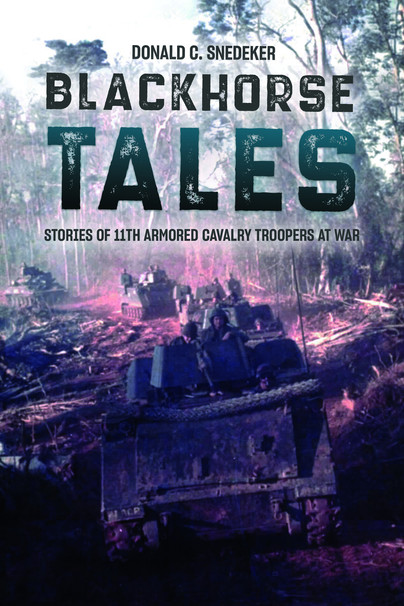
Format: Hardback
Pages: 304
ISBN: 9781636240428
Pub Date: 10 Dec 2021
Illustrations: b/w images throughout
Description:
When the U.S. Army went to war in South Vietnam in 1965, the general consensus was that counterinsurgency was an infantryman's war; if there was any role at all for armored forces, it would be strictly to support the infantry.
However, from the time the 11th Armored Cavalry Regiment arrived in country in September 1966, troopers of the Blackhorse Regiment demonstrated the fallacy of this assumption. By the time of Tet '68, the Army's leadership began to understand that the Regiment's mobility, firepower, flexibility, and leadership made a difference on the battlefield well beyond its numbers.Over the course of the 11th Cavalry's five-and-a-half years in combat in South Vietnam and Cambodia, over 25,000 young men served in the Regiment. Their stories - and those of their families - represent the Vietnam generation in graphic, sometimes humorous, often heart-wrenching detail. Collected by the author through hundreds of in-person, telephone, and electronic interviews over a period of 25-plus years, these "war stories" provide context for the companion volume, The Blackhorse in Vietnam.Amongst the stories of the Blackhorse troopers and their families are the tales of the wide variety of animals they encountered during their time in combat, as well as the variable landscape, from jungle to rice paddies, and weather. Blackhorse Tales concludes with a look at how the troopers have dealt with their combat experiences since returning from Vietnam. Between the chapters are combat narratives, one from each year of the Regiment's five-and-a-half years in Southeast Asia. These combat vignettes begin on 2 December 1966, when a small column of 1st Squadron vehicles and troopers were ambushed on Highway 1 and emerged victorious despite being outnumbered. They go on to describe the one-of-a-kind crossing of the Dong Nai River on 25 April 1968, as the Blackhorse Regiment rode to the rescue during Mini-Tet 1968, and the 2nd Squadron's fight to clear the Boi Loi Woods in late April 1971.

Format: Hardback
Pages: 272
ISBN: 9781612006277
Pub Date: 10 Dec 2021
Series: War in the Far East
Illustrations: 30 b/w photographs
Description:
The last instalment of the War in the Far East trilogy, Asian Armageddon 1944-1945, continues and completes the narrative of the first two volumes, describing how a US-led coalition of nations battled Japan into submission through a series of cataclysmic encounters. Leyte Gulf, the biggest naval battle ever, was testimony to the paramount importance of controlling the ocean, as was the fact that the US Navy carried out the only successful submarine campaign in history, reducing Japan's military and merchant navies to shadows of the former selves. Meanwhile, fighting continued in disparate geographic conditions on land, with the chaos of Imphal, the inferno of Manila, and the carnage of Iwo Jima forming some of milestones on the bloody road to peace, sealed in Tokyo Bay in September 1945.
The nuclear blasts at the end of the war made one observer feel as if he was ‘present at the creation’. Indeed, the participants in the events in the Asia Pacific in the mid-1940s were present at the creation of a new and dangerous world. It was a world where the stage was set for the Cold War and for international rivalries that last to this day, and a new constellation of powers emerged, with the outlines, just over the horizon, of a rising China. War in the Far East is a trilogy of books comprising a general history of World War II in the Asia Pacific. Unlike other histories on the conflict it goes into its deep origins, beginning long before Pearl Harbor, and encompasses a far wider group of actors to produce the most complete account yet written on the subject and the first truly international treatment of this epic conflict. Author Peter Harmsen weaves together complex events into a revealing and entertaining narrative, including facets of the war that may be unknown even to avid readers of World War II history, from the mass starvations that cost the lives of millions across China, Indochina and India to the war in subarctic conditions in the Aleutians. Harmsen pieces together the full range of perspectives, reflecting what war was like both at the top and on the ground.

Format: Hardback
Pages: 288
ISBN: 9781636240824
Pub Date: 05 Dec 2021
Illustrations: 40 photographs
Description:
Free Libya! was the chant heard throughout Libya during the Arab Spring revolution that ended with the death of Colonel Gadaffi in October 2011. The story is about British involvement in Libya since the first treaty signed with the rulers in Tripoli in January 1692.
The book is divided into four eras. The first covers the period up to the Italian invasion in 1911; the second covers the First World War and Italian pacification; the third covers the Western Desert Campaign; and the final part brings the reader up to date with recent events. In the words of the Foreign Secretary, Edward Grey, the 1911 Italian invasion of Libya "led straight to the catastrophe of 1914". Using memoirs of politicians and correspondents from both sides of the conflict, the author pieces together British involvement, shedding new light on the Senussi Campaign and the Duke of Westminster’s rescue of 100 British PoWs at Bir Hakkeim, as well as the story of Colonel Milo Talbot, who did as much as TE Lawrence to establish British influence with Arab leadership, but was never rewarded for his work. Even though hundreds of books have been written about the Western Desert Campaign, this book includes much unpublished material in addressing the contentious issues and explains why General Brian Horrocks wrote: "Command in the desert was regarded as an almost certain prelude to a bowler hat". The final part of the book begins with Britain’s operations to establish Libya as an independent kingdom and the rise of nationalism that led to Gadaffi’s coup in 1969. The story of the tense relationship with the Brotherly Leader during the 'Line of Death' era and subsequent rapprochement precedes an authoritative account of the 2011 revolution. The final chapter, brings the reader up to date with the current conflict as well as the migration crisis and the Manchester Arena bombers.

Format: Hardback
Pages: 256
ISBN: 9781636240008
Pub Date: 28 Nov 2021
Illustrations: b/w images throughout
Description:
For almost half a century, the hottest front in the Cold War was right across Berlin. From summer 1945 until 1990, the secret services of NATO and the Warsaw Pact fought an ongoing duel in the dark. Throughout the Cold War, espionage was part of everyday life in both East and West Berlin, with German spies playing a crucial part of operations on both sides: Erich Mielke's Stasi and Reinhard Gehlen's Federal Intelligence Service, for example.
The construction of the wall in 1961 changed the political situation and the environment for espionage - the invisible front was now concreted and unmistakable. but the fundamentals had not changed: Berlin was and would remain the capital of spies until the fall of the Berlin Wall, a fact which makes it all the more surprising that there are hardly any books about the work of the secret services in Berlin during the Cold War. Journalist Sven Felix Kellerhoff and historian Bernd von Kostka describe the spectacular successes and failures of the various secret services based in the city.


Pages: 304
ISBN: 9781636240626
Pub Date: 15 Oct 2021
Pages: 304
ISBN: 9781636244549
Pub Date: 10 Jul 2024
Description:
"The literature of ideas." When author Pamela Sargent used those words to describe science fiction in 1975, the genre had exploded into the literary mainstream. As a literature of ideas, science fiction has proven to be a powerful metaphor for the world around us, offering a rich tapestry of imagination through which to explore how we lead, how we think, and how we interact.
To Boldly Go assembles more than thirty writers from around the world - experts in leadership and strategy, senior policy advisors and analysts, professional educators and innovators, experienced storytellers, and ground-level military leaders - to help us better understand ourselves through the lens of science fiction.Each chapter of To Boldly Go draws out the lessons that we can learn from science fiction, drawing on classic examples of the genre in ways that are equally relatable and entertaining. A chapter on the burdens of leadership by Ghost Fleet author August Cole launches readers into cosmos with Captain Avatar aboard the space battleship Yamato. In another chapter, the climactic Battle of the Mutara Nebula from The Wrath of Khan weighs the advantages of experience over intelligence in the pursuit of strategy. What does inter-species conflict in science fiction tell us about our perspectives on social Darwinism? Whether using Star Trek: Deep Space Nine to explore the nuances of maritime strategy or The Expanse to better understand the threat poses by depleted natural resources, To Boldly Go provides thoughtful essays on relevant subjects that will appeal to business leaders, military professionals, and fans of science fiction alike.



















